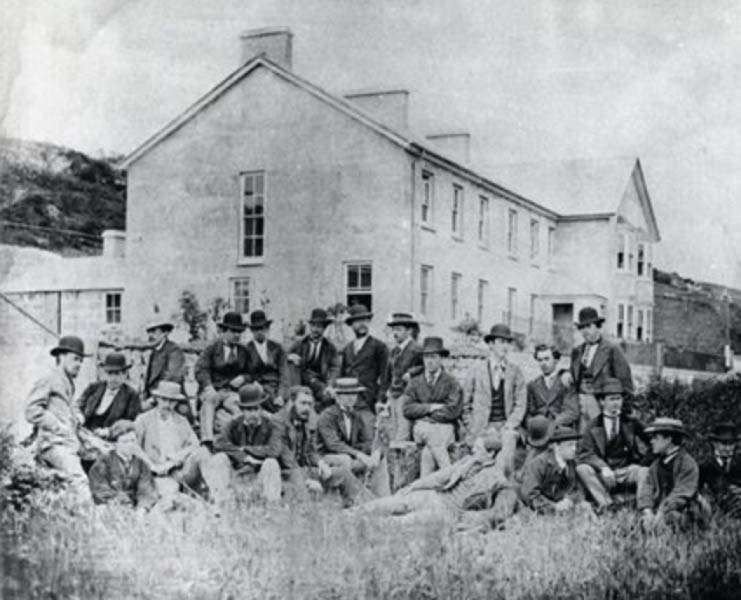G7 Cable Connections
As the leaders of the G7 countries converge in West Cornwall to discuss issues such as climate change, response to the Covid-19 pandemic, and other issues that are of pivotal importance, we take a look at the cable connections between the countries attending, and the significance of Cornwall as a hub of global communications.
Porthcurno valley is home to the first undersea telegraph cable connecting Britain with India and Australia
PK Porthcurno is a local museum with a global story, and has connections with the G7 countries, as well as connections with Australia, India and South Korea. These connections are highlighted: One hundred and fifty years ago the first telegraphic communications from India and Australia were sent via a cable which came ashore at Porthcurno beach and were received at the cable station in the Porthcurno valley.


Porthcurno Telegraph Station
The station rapidly took on a global significance with the formation of companies by Sir John Pender (The Cable King) including the Eastern Telegraph Company in 1872, and the Eastern Extension Australasia and China. It eventually became the busiest telegraph station in the world.
Photo: Zodiac House, Porthcurno Telegraph Station, 1871
Cable and Wireless Telecommunications College
People from all over the world came to Cornwall to be trained. New ideas spread to other parts of the globe and through the company Cable and Wireless (which had origins in Pender’s Eastern Telegraph company and Marconi Wireless), the name Porthcurno was identified with excellence and expertise in international communication.
PK Porthcurno – Museum of Global Communications
Today, Porthcurno valley is home to PK Porthcurno: Museum of Global Communications. We house one of the most important collections of instruments and documents in the world covering the past 150 years – from telegraphic communication to fibre optic communication. The vast collection includes, for example, cable samples, company minute books, photographs, films and much more from all the countries participating in the G7 summit as well as India and Australia. These include sections of the first cross channel cables (1851), samples of the Atlantic cable crossing, samples of the first transatlantic telephone cable (1956), published works relating to the development of commonwealth telephone cable connections and published works relating to wireless communication particularly Marconi’s beam network.

Cornwall’s communication legacy continues today
Technology has progressed and Cornwall has become a hub of communication for today’s digital economy. The cables are now, of course, fibre optic cables. Fifteen cables come ashore at Porthcurno, Sennen Cove, Goonhilly and Bude and connect to all the G7 countries (except Canada). We connect to seven cities on the East Coast of the USA (Island Park, NY, Northport, NY, Manasquan, NJ, Shirley, NY, Bellport, NY Lynn, MA, Brookhaven, NY); six in France (Lannion, Plerin, LePorge, Marseille, St Valery-en-Caux, Penmarch); three in Italy (Palermo, Mazara del Vallo, Genoa); two in Japan (Miura, Okinawa); two in Germany (Norden, Sylt); two in India (Mumbai – two cables, Cochin); one in South Korea (Geoje- two cables) and one in Australia (Perth).
Since the first undersea cable connected Britain with India via Porthcurno over 150 years ago, it is fitting and significant that the G7 leaders are meeting in Cornwall, the birthplace of global communications, and a recognised leader in digital excellence and innovation today.
Header image: MacDonald Gill, Cable & Wireless Circle Map, 1945, shows the British Empire’s telegraph cable and wireless networks around the world. The redlines represent telegraph cables and the dashed lines are radio links.
A big thank you to Gareth Parry, PK Board of Trustees Chair for the research into our cable connections ahead of the G7 Summit.
If you’re interested in looking at a map of today’s submarine cable network go to Submarine Cable Map. The cable network has grown extensively, with companies such as Google and Facebook laying their own cable networks.
Today there are around 426 submarine cables in operation. But this does continually change as new cables are laid, and old cables decommissioned. At PK we are currently working with Subsea Environmental Services to assist in the recovery of outdated and retired submarine cable from the ocean floor, recycling their constituent high-quality materials.
You can read more about this project in our blog: SES Digitisation project | PK Porthcurno
